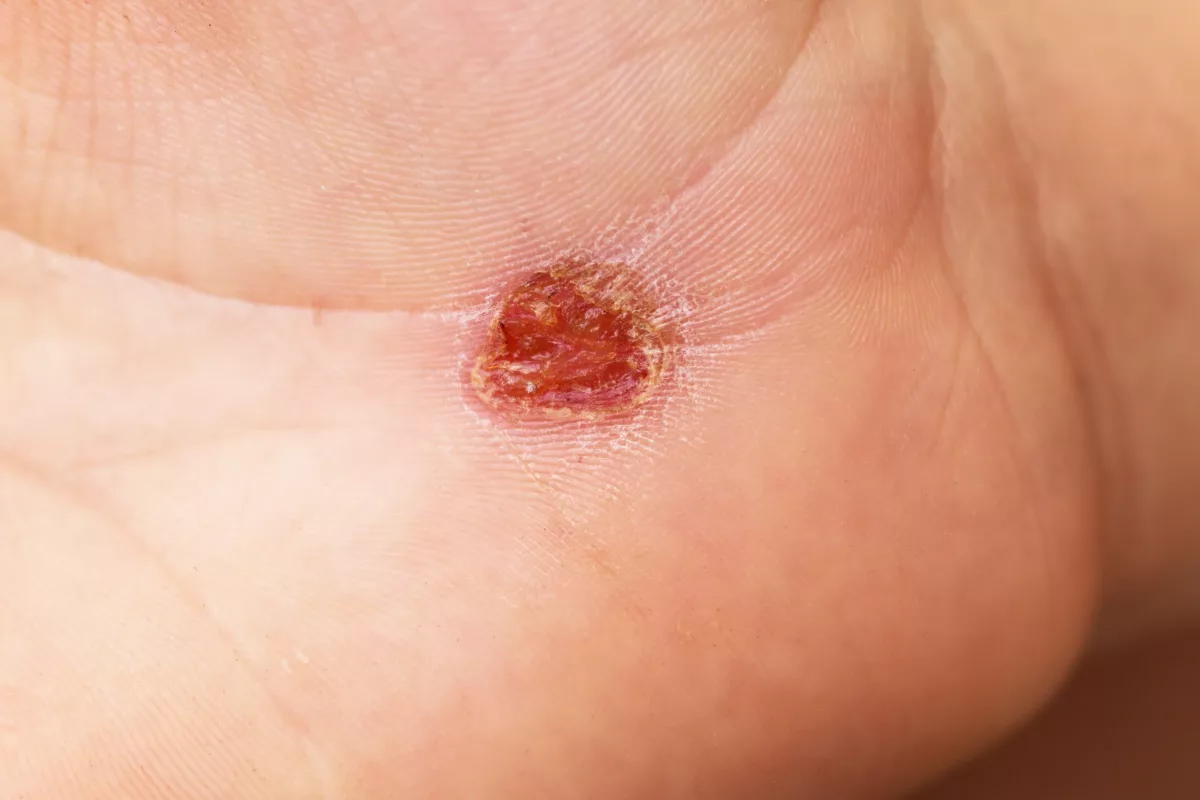Certain wounds on the skin that develop due to problems with blood circulation are called stasis ulcers (also known as vascular ulcers). Most of the time, these wounds heal for a very long time and require specialized care. The most common type of this disorder is venous ulcers. It commonly occurs due to circulatory problems that slow blood flow exiting your legs or feet.
While stasis ulcers may occur due to poor circulation in the veins, some types of this condition develop due to poor circulation in the arteries.
Generally, this is a very common health condition, especially in older adults. For instance, approximately 1% of adults in the United States have a stasis ulcer. The number of affected people increases to 5% among older adults (over 65 years old).
Symptoms
The symptoms of this disorder appear differently among people because they depend on some factors. These include underlying health conditions, the severity and type of the disease, and age. Check below some examples:
Stasis Ulcer Symptoms
Those who develop venous ulcers may experience the following symptoms. For example:
- Thickening or hardening of the skin
- Skin color changes (including red, purple, or brown)
- Stasis dermatitis that causes tingling or itching
- Varicose veins
- Leg cramps
- Swelling
- Oozing or bleeding
- Irregular shapes and uneven edges of the wounds
Arterial Ulcer Symptoms
The following symptoms usually occur before the ulcer forms. Examples include:
- Dry skin
- Hair loss in the affected area
- Limited blood flow when lying down and raising the feet up
Check below some symptoms of arterial ulcers:
- The wounds appear in the parts of the body furthest from the heart (such as between the toes)
- Raised edges of the ulcer
- Skin color changes around the wound (such as yellow, red, gray, or black)
- The wounds may form deeper as you can see the muscles or tendons
Causes
There are multiple health problems that may lead to stasis ulcers. Check below some causes of this condition:
- Stasis ulcers – Most stasis ulcers occur due to problems with veins. Usually, these wounds develop in the legs and feet because of the veins that cannot work properly.
- Arterial ulcers – Sometimes, this type of vascular ulcer is called ischemic ulcers. It often occurs due to reduced blood flow to the affected area.
Risk Factors
Healthcare professionals have identified some factors that could elevate your risk of developing stasis ulcers. Check below some examples:
- Peripheral vascular disease
- Cardiovascular disease
- Hypertension (high blood pressure)
- Smoking
- Diabetes
- Obesity (excessive body weight)
- Injuries (including bone fractures, burns, or muscle trauma)
- Standing for long periods
- A family history of vascular ulcers – If you have a parent or sibling with this condition, you are more likely to develop it.
- Age – Older adults are at increased risk of developing vascular ulcers.
- Deep vein thrombosis (DVT)
- Varicose veins
- Pregnancy
What Happens if a Stasis Ulcer Goes Untreated?
If you ignore the symptoms and do not get treatment for this condition, you may experience some complications. Check below some examples:
- Infections
- Cellulitis
- Osteomyelitis
- Septicemia
- Gangrene and amputation
- Chronic pain
- Venous eczema
- Cancer (rare)
- Skin scaling and discoloration
This document does not contain all possible complications of stasis ulcers. However, you can consult with your physicians about ways to reduce the risk or prevent previous complications.
How to Prevent Stasis Ulcers?
While not every time is possible to prevent this disorder, the following tips may help reduce the risk. Examples include:
- Try to get and maintain a healthy weight
- Manage chronic health conditions (including high blood pressure, diabetes, and others)
- Regular checkups
- Quit smoking (if you face problems with smoking cessation, discuss it with your healthcare professional)
- You should get treatment as soon as possible if you develop ulcers
Diagnosis
In some cases, doctors diagnose this condition during a physical examination. However, they may order some tests to identify the exact cause of stasis ulcers. Check below some tests:
- Ankle-brachial index (ABI) test – During this test, doctors check blood pressure on both arms to see if there is a difference.
- Tests to check the pulse – In some cases, doctors may identify heart problems by listening to the heart and breathing sounds.
- Blood tests – Physicians usually perform an A1C hemoglobin test because it helps make the best treatment plan for a person with stasis ulcers. It also may determine whether you have diabetes.
- Imaging tests – The following tests are often done to check how blood flows around the ulcer, which may help determine the exact cause of the disease. Physicians usually perform X-rays, MRI (magnetic resonance imaging) scans, CT (computed tomography) scans, and ultrasounds.
Treatment
Usually, most stasis ulcers are treatable, but the healing time still depends on the severity of the condition. It is also vital to treat the underlying cause of the stasis ulcer. Otherwise, the condition may return. Check below some treatment options often recommended by doctors:
Medicines
- Antibiotics – You may develop bacterial infections due to open sores that appear when you experience stasis ulcers. Therefore, physicians often recommend antibiotics to prevent these infections. Additionally, after surgery, they may also prescribe antibiotics.
- Topical gels and ointments – These medications are used to remove dead or infected tissue and improve circulation in the affected area.
- Painkillers – Some people may experience moderate to severe pain. In such cases, physicians may prescribe some medicines to relieve pain.
- Medicines to treat the underlying cause – These include antihypertensives, medicines to control cholesterol and blood sugar, and others.
Bandages
Usually, physicians recommend different types of bandages that help heal wounds. Check below some examples:
- Bandaging – In such cases, you will cover the wound with a protective bandage to improve healing and prevent infections.
- Compression garments – For example, socks, stockings, and other items, which help relieve swelling.
- Specialized shoes, socks, or orthotic devices
Other Treatments
The options listed below are recommended by doctors when previous treatments (bandages and medicines) do not work or you develop large wounds. These include:
- Revascularization – This treatment option is used to remove blockages in blood vessels that cause stasis ulcers.
- Surgery – During this procedure, surgeons will remove dead or infected areas of the ulcer to help the wound heal more easily. They may also use skin grafts to prevent worsening of the complications (such as gangrene).
- Physical activity – Physicians may recommend this treatment (also known as prescribed walking) to prevent new stasis ulcers.
- Hyperbaric oxygen therapy – This procedure is used to improve healing.
Frequently Asked Questions
When should I go to the emergency room?
People who experience the following symptoms should go to the emergency room (ER) or call 911 immediately. For example:
- Fever
- Skin color changes (such as dark brown or black around the affected area)
- Bad odor coming from the wound
- Ulcer oozing or bleeding
- Swelling
What is the best treatment for a venous stasis ulcer?
Compression bandages or stockings and topical creams, gels, or ointments are the most effective treatments for people who develop venous ulcers. For more details, discuss it with your healthcare professional.
What happens if venous stasis is left untreated?
If you leave a venous stasis untreated, it may lead to serious infections as well as other health conditions. Ask your healthcare provider if you have any other questions.




